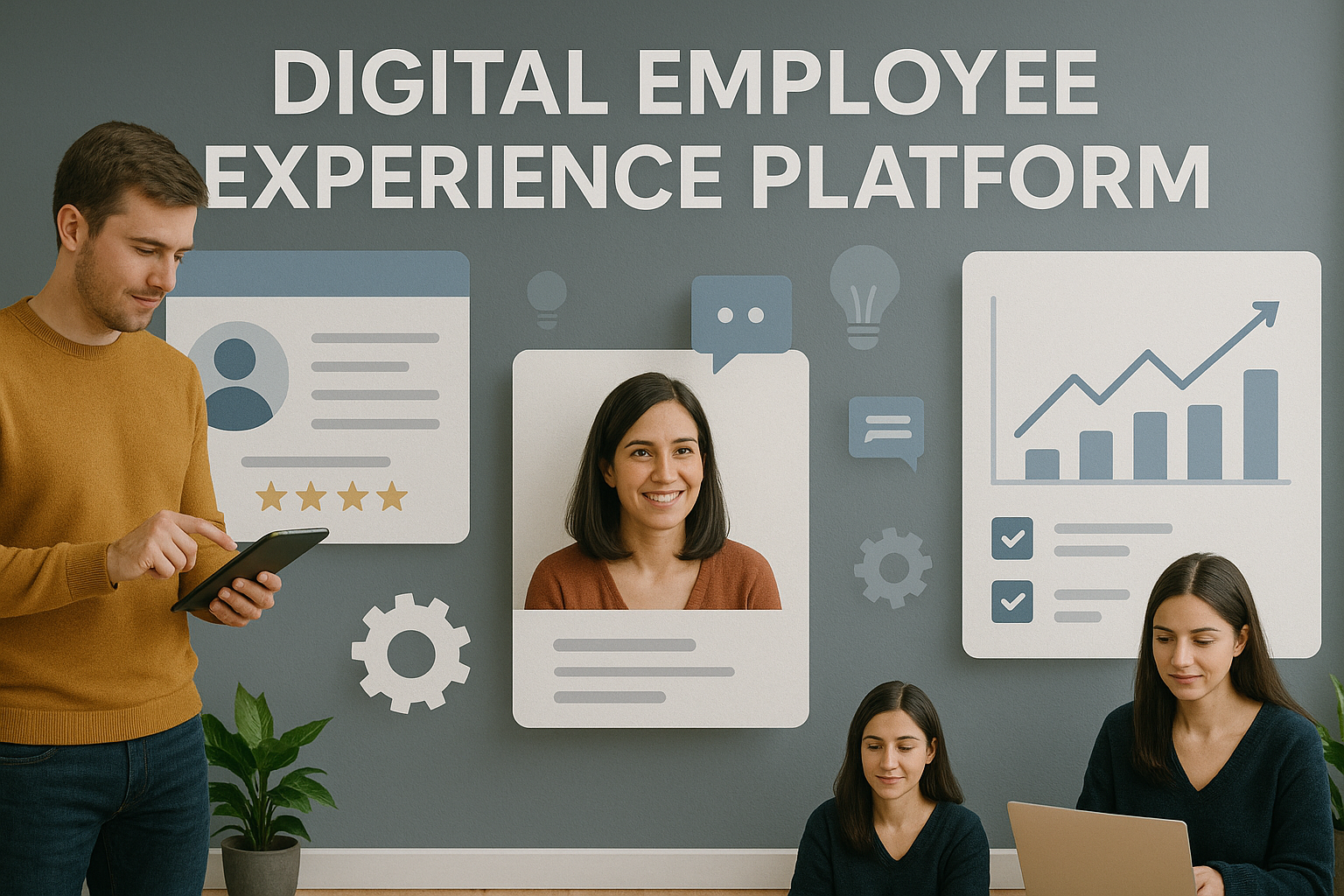How to Choose the Right Digital Employee Experience Platform for Your Company?

Introduction
In today’s fast-paced digital workplace, the employee experience is no longer limited to office interactions—it’s defined by how easily teams can connect, collaborate, and access essential tools online. A well-structured digital employee experience platform can enhance productivity, reduce friction, and keep employees engaged no matter where they work.
However, choosing the right platform can be a challenge. With numerous options available, each offering different features and integrations, how can you determine which one truly meets your organization’s needs? We’ll explore the key factors to consider when selecting a digital employee experience platform that aligns with your business goals and values.
Why Does Employee Experience Matter in a Digital Workplace?
The modern workplace relies heavily on digital tools—from communication platforms to HR systems. But when employees are forced to switch between multiple applications and logins, productivity can suffer. A fragmented digital environment can also lead to frustration, disengagement, and even security risks.
A digital employee experience platform helps eliminate these barriers by centralizing all work-related tools in one secure space. It creates a unified digital environment where employees can access resources, collaborate efficiently, and feel more connected to their organization.
Without such a platform, companies often face:
- Disconnected systems that make simple tasks time-consuming
- Low engagement due to poor communication and accessibility
- Security risks caused by weak employee access control
- Limited visibility into employee performance and engagement
By integrating digital systems into one cohesive experience, organizations can improve both employee satisfaction and operational efficiency.
What Should You Look for in a Digital Employee Experience Platform?
Selecting the right platform requires a strategic approach. It’s not about choosing the most popular option—it’s about finding one that fits seamlessly into your company’s structure and goals. Here are the essential factors to evaluate:
Is the Platform User-Friendly?
A platform should make employees’ lives easier, not more complicated. It must have an intuitive interface, clear navigation, and the ability to personalize dashboards based on user preferences.
Does It Integrate with Existing Systems?
Compatibility is key. The ideal platform should integrate smoothly with the tools your organization already uses—whether they are HR, project management, or communication systems.
How Strong Are Its Security Features?
Data security should always be a top priority. A reliable platform must provide advanced employee access control, such as multi-factor authentication and role-based permissions, to safeguard sensitive information.
Does It Offer Credential Management?
Strong employee credential management prevents security issues and simplifies access for users. Look for platforms that automate password management, regulate permissions, and revoke access when employees leave the organization.
Can It Provide Valuable Insights?
Modern platforms should also deliver analytics on user engagement, tool usage, and performance trends. These insights help HR and IT teams identify bottlenecks and improve the overall digital experience.
Is It Scalable and Supported?
Your company’s needs will evolve, and your platform should evolve with them. Choose a solution that can grow with your team size, adapt to new technologies, and offer responsive customer support for smooth onboarding and updates.
What Are the Key Benefits of Choosing the Right Platform?
A well-chosen digital employee experience platform provides measurable advantages for both employees and organizations.
For Employees:
- Easy and secure access to all work tools in one place
- Personalized digital environments for improved productivity
- Reduced login issues and faster access times
- Stronger data protection and privacy
For Employers:
- Centralized control of access and credentials
- Streamlined workflows and reduced IT complexity
- Real-time insights into engagement and system performance
- Enhanced compliance and lower operational costs
CounterTEN believe a well-designed platform should do more than simplify processes—it should empower teams, strengthen collaboration, and foster a connected digital culture across the organization.
How Can the Right Platform Transform Your Business?
Implementing the right digital employee experience platform isn’t just a tech upgrade—it’s a strategic decision that influences every part of your business. From improving communication to securing employee credentials, the impact extends across departments.
If your goal is to create a unified, secure, and high-performing workplace, CounterTEN offers innovative solutions that help businesses manage employee engagement and digital access more effectively. Explore how our platform can redefine your company’s digital experience and help your team perform at its best.
FAQs
What is a digital employee experience platform?
A digital employee experience platform is a centralized solution that connects employees with all their digital tools and resources, helping them work efficiently and stay engaged.
How does employee access control enhance security?
Access control ensures that only authorized users can access specific data or systems. This reduces the risk of data breaches and enhances organizational security.
Why is credential management important for businesses?
Effective credential management helps automate and secure login processes, manage user permissions, and revoke access when necessary to maintain compliance.
Which industries benefit most from digital employee experience platforms?
Industries with hybrid or remote teams—such as technology, finance, and healthcare—benefit the most from platforms that streamline communication and digital workflows.
How can I explore CounterTEN’s digital platform?
Visit CounterTEN’s platform page to discover how our solutions can enhance employee access control, digital engagement, and overall workplace efficiency.